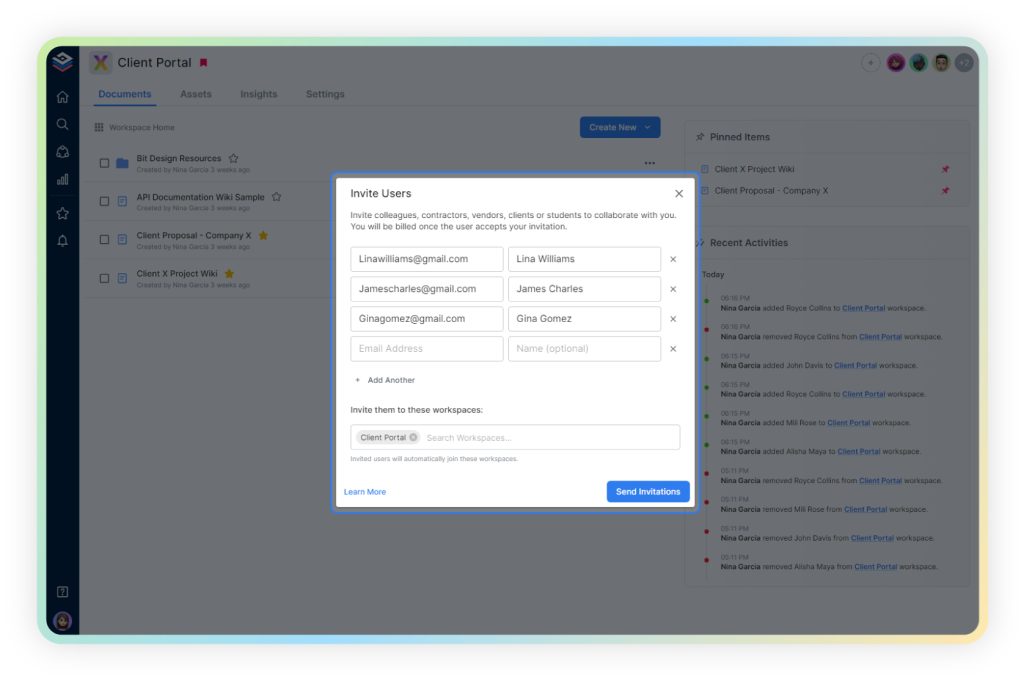Creating Minimalist Checklists: How Efficient Lists Can Enhance Your Productivity and Clarity

Enhancing Productivity with Minimalist Checklists
In our fast-paced world, clarity and efficiency are essential for success. A minimalist checklist can serve as a powerful tool designed to streamline tasks and enhance focus. By reducing distractions, these lists enable you to prioritize what truly matters, allowing for a more efficient approach to work and personal projects.
Consider the advantages of incorporating minimalist checklists into your daily routine:
- Enhanced Focus: Fewer items lead to less overwhelm. Studies show that multitasking can decrease productivity by up to 40%. By limiting your checklist to a few key tasks, you can dedicate cognitive resources to each item, ensuring higher quality work.
- Improved Clarity: Clear priorities allow for better decision-making. When you have a list that succinctly outlines your objectives, it becomes easier to navigate your day. For example, instead of saying “work on project,” specify “complete introduction for XYZ project.”
- Increased Productivity: Completing tasks becomes more manageable and rewarding. Minimalist checklists give you quick wins—finishing small tasks can provide a sense of accomplishment that motivates you to tackle larger projects.
Creating an effective checklist is not just about listing tasks; it’s about designing a framework that encourages action. Minimalism invites us to shed the unnecessary, thus safeguarding our attention for more immediate goals. This approach fosters a sense of accomplishment, even with simple tasks, which in turn boosts morale and productivity.
When crafting your minimalist checklist, focus on a few strategies that can optimize your workflow. Begin by clearly defining your objectives for the day or week and try to limit your list to three to five essential tasks. This practice can prevent decision fatigue and keep you aligned with your overarching goals. For instance, a typical day might include: “1. Submit report, 2. Attend team meeting, 3. Review and respond to emails.” Each task is specific, actionable, and concise, allowing for quicker transitions between them.
Additionally, consider utilizing digital tools or paper planners that support checklist functionality. Applications like Todoist or Trello can help you visualize your tasks while keeping them to a manageable number. The act of checking off completed items also adds to a sense of achievement, reinforcing positive habits.

As you delve into the world of minimalist checklists, you’ll discover powerful strategies that can transform your workflow. In an age teeming with information and options, mastering the art of simplification is your key to unlocking maximum productivity. Let’s explore how to craft these lists in a way that not only organizes your tasks but also clarifies your objectives, leading to a more effective and fulfilling day.
DISCOVER MORE: Click here to simplify your digital life
Crafting Your Minimalist Checklist: Strategies for Success
To harness the full potential of minimalist checklists, understanding the principles behind them is crucial. The process begins with recognizing the significance of intentionality in your task management approach. Each item on your list should reflect your priorities and align with your broader objectives. This requires a moment of reflection on what is truly important for your day, week, or project timeline.
One method to ensure clarity is to utilize the SMART criteria when framing your tasks. SMART stands for Specific, Measurable, Achievable, Relevant, and Time-bound. By applying this strategy, you will craft tasks that are not just vague ambitions but clear action points that guide you through your workflow. For instance, instead of stating “improve website,” a SMART task would be “revise homepage content by Friday noon.” This specificity not only clarifies your intention but also sets a deadline that encourages completion.
To streamline your process, consider adopting the following techniques to enhance your minimalist checklist:
- Limit Your List: Aim for three to five key tasks each day. This restriction forces you to eliminate non-essential items and focus only on what contributes significantly to your goals. For example, prioritize: “1. Draft project proposal, 2. Meet with stakeholders, 3. Send follow-up emails.”
- Use Action Verbs: Start each task with a strong action verb to clarify what you need to do. Phrases like “create,” “review,” or “finalize” can add urgency and clarity to your to-dos, motivating you to take action immediately.
- Review and Revise: At the end of each week, review your completed tasks and assess their effectiveness. This practice helps you recognize patterns, understand what types of tasks are most productive, and refine future checklists accordingly.
Implementing these strategies can dramatically elevate the clarity and efficiency of your task lists. The goal is to create an experience where checking items off is not only gratifying but also leads to significant progress in achieving your goals. As you refine your checklist-making skills, you might discover that your productivity can be improved not merely by doing more, but by doing less effectively.
In our increasingly distracted environment, maintaining focus can be a challenge. Minimalist checklists cut through the noise, serving as a clear pathway toward your objectives. By adopting a simple yet intentional approach to task management, you can reclaim your time and energy, paving the way for enhanced clarity and productivity in both your professional and personal life.
Creating Minimalist Checklists: How Efficient Lists Can Enhance Your Productivity and Clarity
When embracing the power of minimalist checklists, one quickly discovers that simplicity is key. The approach to crafting a checklist that genuinely enhances productivity lies in focusing on essential tasks only. This belief is anchored in research that suggests an overload of information can lead to decision fatigue, ultimately hindering performance. Therefore, a minimalist checklist acts as a cognitive anchor, allowing individuals to concentrate on their most critical priorities without unnecessary distractions.
One of the foremost advantages of utilizing minimalist checklists is their ability to provide clarity. When tasks are stripped down to their core components, it becomes easier to identify what truly needs to be accomplished. This method simplifies the mental workload, leading to increased focus. Moreover, a concise checklist can instill a sense of accomplishment as each task is checked off, motivating individuals to remain engaged and driven throughout their activities.
Additionally, the very act of creating a minimalist checklist encourages individuals to evaluate their tasks critically. By distinguishing between what’s vital and what’s trivial, users can refine their goals and set realistic expectations. Importantly, this practice often leads to enhanced time management skills. Individuals become adept at estimating how long tasks might take, which in turn improves their planning abilities.
| Category | Key Features |
|---|---|
| Clarity | Concise tasks foster focus and eliminate distractions. |
| Enhanced Focus | Simplified lists allow concentration on priorities without overwhelm. |
Aside from these advantages, minimalist checklists also serve as a practical tool for personal development. By continually refining and adjusting the tasks on a checklist, users create a personalized productivity system that evolves with their needs. This adaptability enables ongoing growth, ultimately resulting in not just a checklist, but a roadmap toward greater achievement.
In conclusion, the process of creating minimalist checklists empowers individuals to take control of their productivity, providing clarity, enhanced focus, and a sense of accomplishment. Adopting this strategic approach can lead to profound changes in how tasks are handled, ultimately resulting in a more organized and fulfilling life.
DISCOVER MORE: Click here to learn how personal organization can enhance your clarity and focus
Embracing Technology for Modern Minimalist Checklists
As we journey through an era dominated by rapid technological advancements, leveraging digital tools becomes paramount in refining our minimalist checklist approach. With several apps and software designed to optimize task management, the potential for productivity enhancement is limitless. Tools like Todoist, TickTick, and Notion offer user-friendly interfaces with features tailored for minimalists, enabling users to organize tasks without overwhelming clutter.
One notable advantage of digital minimalism is the ease of collaboration. For teams, apps can synchronize tasks, ensuring that everyone is on the same page, which enhances accountability. This collaborative feature is particularly valuable in diverse working environments that demand seamless communication among team members. For instance, by assigning tasks within digital platforms, it removes the chaos of email threads and follows-ups, resulting in improved focus and clarity.
Moreover, many of these applications incorporate technology-driven features that can help you customize your checking experience. Setting reminders, exploring color-coded tasks, and integrating with calendars can provide visual cues that further enhance focus. Understanding which tasks are due can turn time management from a daunting chore into a manageable routine, where visualization aids in prioritization.
The Role of Reflection in Continuous Improvement
Creating effective minimalist checklists also requires an ongoing commitment to reflection. It’s not enough to create lists; reviewing their effectiveness is essential for continuous improvement. Post-task reflection allows individuals to assess what worked, what didn’t, and why certain objectives may have been missed. For instance, after completing a significant project, reflect on the completion checklist: Did the checks feel coherent? Were there tasks that lost relevance? What could have been omitted?
Research suggests that habitual reflection can lead to heightened self-awareness, a vital ingredient in personal development and productivity. Stanford University researchers found that individuals who engage in reflective practices outperform their peers in various tasks, including goal-setting and execution. Therefore, integrating regular reviews of your checklist can foster a more profound understanding of your working habits and creativity styles, ultimately streamlining your approach.
Combining Minimalism with Prioritization Techniques
When adopting minimalist checklists, the integration of prioritization techniques becomes a potent tool in your productivity arsenal. The Eisenhower Matrix, for example, categorizes tasks into four quadrants based on urgency and importance. This method encourages you to distinguish between what truly deserves your attention, further refining your checklist to focus on essential tasks only. By aligning your checklist items directly with the Eisenhower Matrix categories, you will feel empowered to ignore distractions and prioritize effectively.
Another effective prioritization method is the ABCDE technique, developed by author Brian Tracy. This approach assigns a letter grade to each task based on its level of significance. Tasks graded “A” are highly important and should take precedence, while “C” refers to tasks that can be dealt with later. By categorizing tasks, you’re able to maintain clarity and commitment to what should be done first, enhancing not just productivity but also the overall satisfaction derived from completing tasks.
Ultimately, incorporating these strategies, technological advancements, reflective practices, and prioritization methods will create a robust framework for minimalist checklists that resonates with clarity and efficiency. In a world where time is often overshadowed by endless to-do lists, adopting minimalist checklists can revolutionize your productivity and allow you to focus effectively on what truly matters.
DIVE DEEPER: Click here to discover how minimalism can transform your productivity
Conclusion: The Power of Minimalism in Productivity
In an increasingly fast-paced world, the value of minimalist checklists cannot be overstated. By focusing on essential tasks and eliminating unnecessary distractions, these streamlined lists serve as powerful tools for improving both productivity and clarity. The integration of technology, such as task management apps, enhances the minimalist approach, allowing individuals and teams to collaborate effectively while maintaining a clear focus on their objectives.
Moreover, embracing a culture of reflection fosters continuous improvement. By regularly reviewing the effectiveness of your checklists, you can tailor them to align with your evolving work habits and priorities. This practice not only leads to heightened self-awareness but also empowers you to refine your processes, ultimately maximizing productivity. Techniques like the Eisenhower Matrix and ABCDE method ensure that your time is spent on what truly matters, further enhancing your ability to make informed decisions about task management.
As you embark on your journey towards better productivity with minimalist checklists, consider experimenting with different organizational methods and tools that resonate with your lifestyle. The potential for enhanced clarity and efficiency is vast, and the adoption of these strategies can result in a more focused, satisfied, and productive you. In a world filled with overwhelming choices and distractions, let minimalist checklists guide you toward a more productive and fulfilling future.


